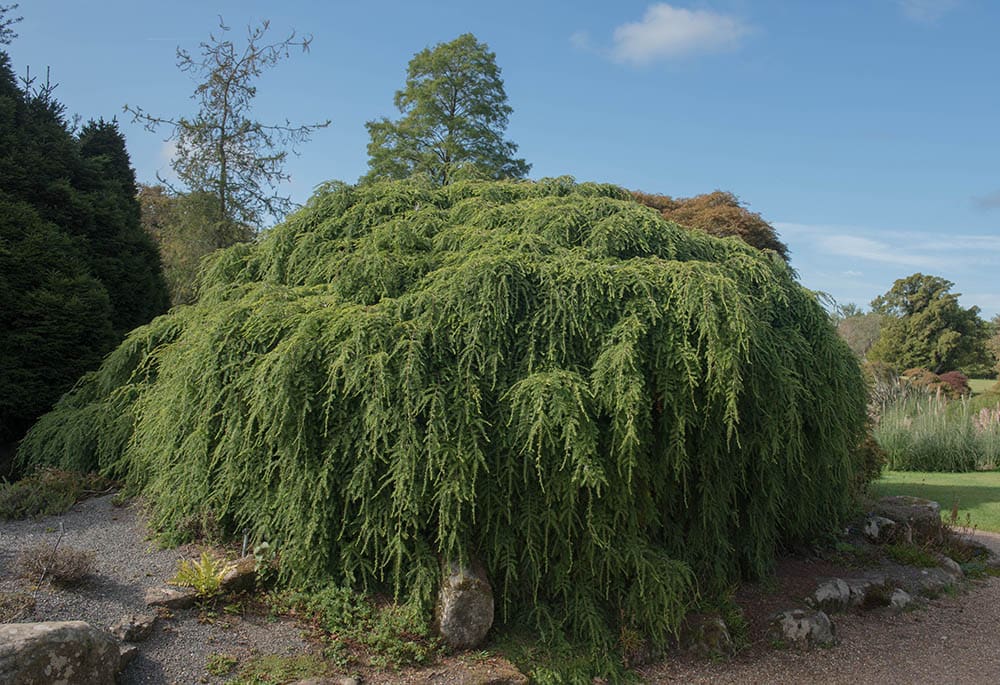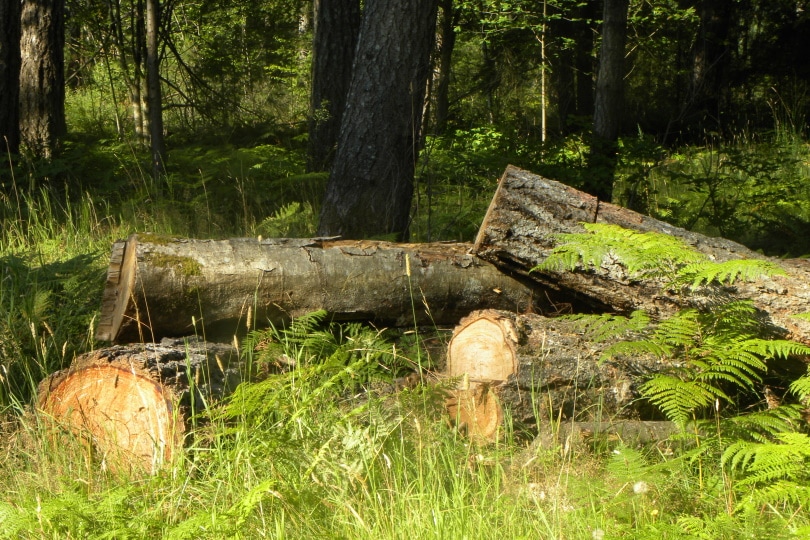What Is the State Tree of Pennsylvania? Facts & FAQ
-
Pete Ortiz
- Last updated:

Pennsylvania is one of the safest and most beautiful American states. Grandiose mountains, mesmerizing landscapes, and diverse wildlife: that’s what the Keystone state is all about. It’s also big on symbols and emblems. For example, back in 1931, the eastern hemlock was named the Pennsylvanian state tree. Why pick it, though? First, it’s very prolific throughout the state. Second, it’s a threatened species.
And third, the eastern hemlock is a go-to choice for building homes, making leather, crafting furniture, and even treating diseases. Lastly, Dr. Joseph Rothrock, the “Father of Forestry”, named it his favorite tree. How long does it last? When was it discovered? Can you grow the hemlock in your backyard? And finally, who (and how) chose it as the state tree? Let’s find out!
Why the Eastern Hemlock?
The eastern hemlock is a majestic tree with impressive characteristics and an extended life cycle. A common sight in lush Pennsylvania forests, it’s a long-living species that lasts for up to 800 years (or even more, given the conditions). This is a slow-grower, though, and it takes 200–300 years to reach maturity in the wilderness. More importantly, it’s been a symbol of the state long before it got the official “stamp”.
You can see the eastern hemlock every step of the way in the Keystone State. As for the locals, they appreciate its sturdiness, wear resistance, and flexibility. That’s exactly why Dr. Joseph Rothrock gave his “blessing” for it back in 1896, long before it was officially perpetuated as Pennsylvania’s state tree. And one more thing: the eastern hemlock is endangered. Its populations are infected by the HWA—a tree-killing insect.

When Did They Pick It as the State Tree?
After Rothrock’s proposal, it took Pennsylvania officials 30+ years to designate the eastern hemlock as the state tree. The vast majority of the citizens of Pennsylvania agreed with the doctor’s suggestion. After that, it was just a matter of time before the bill was signed. As an integral part of the ecosystem, it provides food and shelter for local wildlife.
The squirrels, deer, and rabbits eat it to survive through harsh winters. This is interesting: along with the tulip tree over in Indiana, the eastern hemlock was the first tree to be recognized as a state symbol. That’s right: both were picked in 1931. In contrast, the longleaf pine was only officially named the state tree of Alabama in 1997.
Are State Trees a Common Thing in the States?
Yes, every single state in the US has a state tree to represent it. Much like state flowers, these trees embody the very spirit of the state and serve as a symbol. And, except for the Hawaii emblem, all trees are native to Northern America. They’ve been here long before the very first settlers arrived, and that’s what makes them a perfect pick. In Colorado, it’s the blue spruce; Oregon has embraced the Douglas fir.
Scarlet oak is the symbol of DC, while Idaho’s icon is the Western white pine. State trees always have a historical background and a strong impact on the economy and the well-being of the state. And while it took roughly 100 years for all 50 states to officially designate a state tree, the “adoption” process happened in the 1800–1900 period, during the Industrial Revolution in the States.

What About Other Countries?
Most nations around the world are just like the Americans in this regard: they also use trees as symbols and icons. However, unlike the States, they usually only have one tree to represent the entire nation/country. For example, in Argentina, it’s the Golden Wattle. Canadians have a maple tree leaf on their flag. Beech is the national tree of Denmark, while the Royal Oak symbolizes the UK.
The list goes on and on. The key takeaway here is that all these countries pick native trees (and flowers or plants) to represent them. It’s all about history, heritage, the role that tree played in the becoming of the nation, and how widespread it is across the land.
What Is the Eastern Hemlock Used For?
The eastern hemlock is very easy to work with, even if you’re just getting into woodworking. It’s versatile, pliable, and takes minimal effort to finish. The settlers have been using it to build furniture: it’s an excellent alternative to the more expensive hardwoods found throughout the United States. It can also be used as paper pulp (for newsprint, for example), while the bark helps treat diseases of the throat and mouth.
It’s known to help against diarrhea, trouble with the digestive system, and even scurvy. How does this work? The hemlock is rich in tannins. Just like other astringent chemicals, it forces the linings found in the human digestive tract, mouth, and throat to shrink and work as a protective layer. This tree is used for tanning (producing leather from animal skin and hide) as well.
Can You Grow It in Your Yard?
Yes, the eastern hemlock is a widely cultivated tree, and it takes relatively little effort to grow. Shade tolerant, able to grow in moist soil, and low-maintenance (it’s not messy), this stately conifer tree stays gorgeous 365 days a year. It can handle full exposure to the sun as well, but only in the north. Also, it’s hardy to zones 3–7, which gives you enough room for “maneuvers”.
So, what’s the best time for planting it? We recommend doing that in early spring or summer. Make sure there’s a 30–40-foot gap between each seed and they’ll “gain” 12–24 inches each year. Fertilize them once or twice a year, see that the soil is loamy and acidic, and they will grow rapidly. The eastern hemlock is pretty tall and can reach over 170 feet in height and 75” in diameter. On average, it grows 60–70 feet tall and 25–35” in diameter.
When Was It Discovered?
Also known as the Canadian hemlock, the eastern hemlock is native to North America. It’s more prevalent in the eastern parts of the continent (hence the name), mainly the Appalachian Mountains, Illinois, Michigan, Minnesota, and, of course, Pennsylvania. And if you cross the US-Canadian border, you’ll see that these marvelous trees are spread across New Brunswick, Quebec, and Ontario as well.
So, when was it discovered, exactly? This tall pyramidal-shaped tree has been around for at least 8000 years. And it was first mentioned by Carl Linnaeus, a Swedish botanist, back in 1763; he named it Pinus Canadensis. However, it wasn’t until 1847 when Stephan Endlicher, an Austrian botanist, added the name Tsuga, which is Japanese for hemlock.

Eastern Hemlock vs Balsam Fir: What’s the Difference?
Unless you’re a seasoned scientist, botanist, or, let’s say, arborist, you probably won’t be able to set the hemlock apart from the balsam fir. However, while these two trees are, indeed, very similar, they do have distinctive characteristics that set them apart from each other. First, the hemlock is feathered, while the branches on the balsam fir grow in an ascending manner.
Second, like most fir trees, the top of the balsam fir has a conical shape. That’s not the case with the eastern hemlock, though: its topmost shoot usually “hangs down”. This is true both for young and mature trees, by the way. They smell different, too, and the fir cones are upright and bigger, while the needles are longer.
The eastern hemlock doesn’t have resin along the ridges of the bark; the balsam fir does. The balsam fir is roughly the same size as the eastern hemlock (45–75 feet and 20–25 inches in diameter) but has a shorter lifespan—200 years max. So, yes, there are more than enough features between these two trees that make them unique.
In Conclusion
The grand eastern hemlock deserves to be the state tree of Pennsylvania—there’s no doubt about that. It’s a symbol of resilience, endurance, and ambition, which is exactly what this state is all about. It’s not only beautiful and long-lasting but also widely used in woodworking and medicine. Many decades ago, it helped the first settlers survive the cold winters in Pennsylvania.
A common sight in the local forests, this tall and strong evergreen tree does a great job of representing Pennsylvania. So, if you’re fascinated by native North American trees, Pinaceae Tsuga Canadensis is definitely worth your attention. It’s been the heart and soul of this state for almost 100 years now and isn’t going anywhere!
- Commonwealth of Pennsylvania – State Symbols
- PAForestry – Who was JOSEPH TRIMBLE ROTHROCK
- NewEnglandForestryFoundation – Eastern Hemlock
- Canadian hemlock, Eastern hemlock, Tsuga canadensis
- USDA – Eastern Hemlock Tsuga canadensis
- USDA – Hemlock Wooly Adelgid
- How to Grow Canadian Hemlock Trees
- RXList- EASTERN HEMLOCK
- TreeHugger – Do You Know Your State Tree
- com – National tree
- What Is the State Tree of Pennsylvania?
- ArborDayFoundation – Balsam Fir
- Trees of the Adirondacks – Balsam Fir (Abies balsamea)
- Eastern Hemlock vs Balsam Fir
Featured Image Credit: Mammiya, Pixabay
Contents


